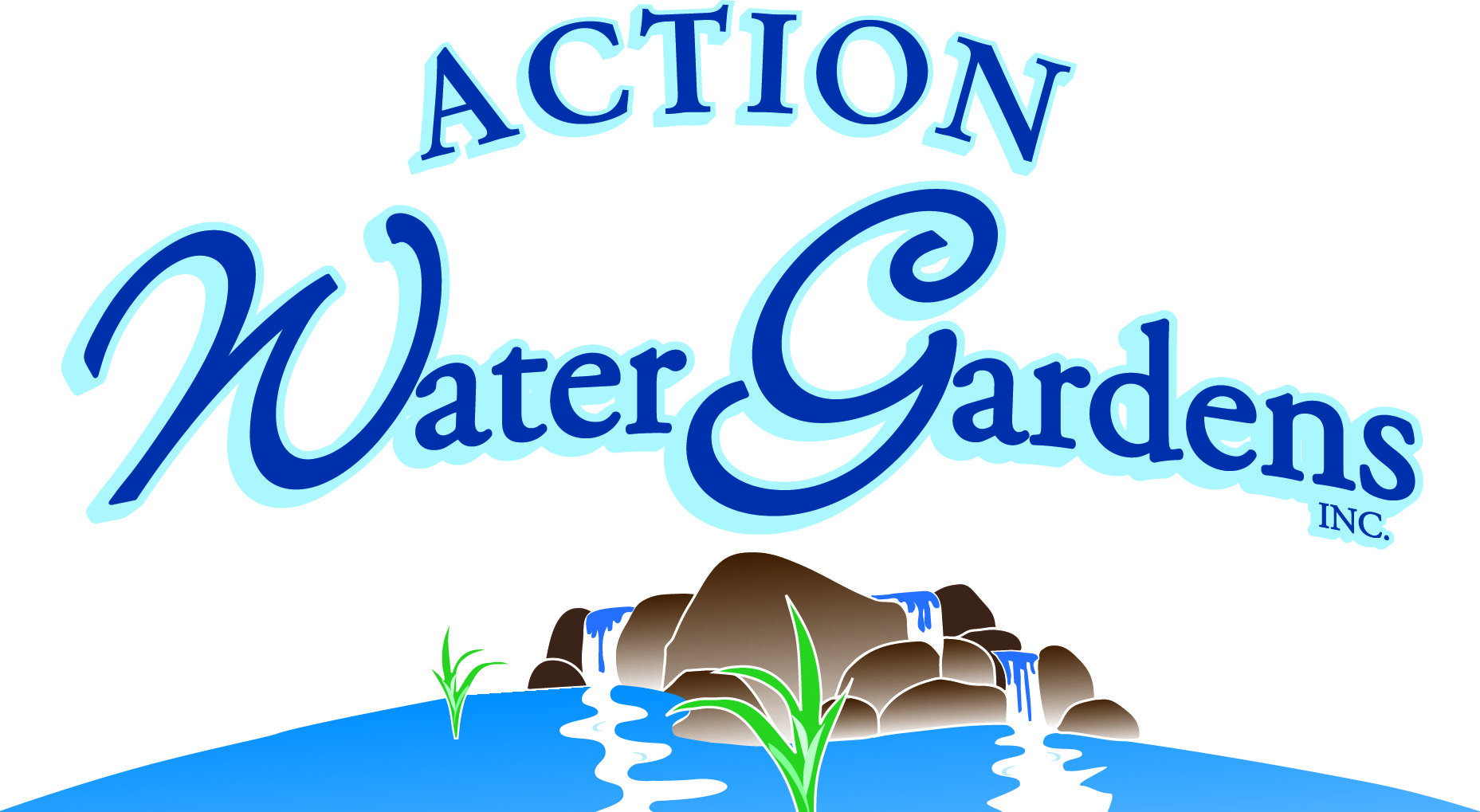A Guide to Spring Opening
Let Mark and the crew at AWG take care of your water gardens’ spring opening needs. If you do choose to take on the tasks yourself, here is a check list and some tips you can take to keep your water garden free of muck.
Clean & drain your pond. The first step would be to clean up all the debris around the pond then you will want to drain the pond water down and into large tanks or tubs that will hold your fish while you clean the pond. *Remember to save as much of the water from the pond as you can - if it's clean; since re-using the pond water to flush or refill will conserve water and be better for your fish. When the water in the pond is low, this is a good time to net your fish and put them in the tubs full of the conserved water. Add an aerator and cover just in case they are feeling adventurous and want to jump out.
When the pond is finally empty, Remove algae and debris left on the bottom of the pond by scooping out the large debris by hand and putting it in a waste bucket. Next you need to clean your filter mats, skimmer, and the Bioballs inside the waterfall chamber. A wet-vac is useful for the cleanup process. Now is a good time to check your pond's lighting, and replace lights as needed. Cut back any plants that are taking over your pond and re-adjust any rockwork that may have become unstable.
Once you have cleared all the debris such as leaves and twigs, this is when you power wash your pond. The high pressure water helps remove stains and string algae off of your rocks and the rubber lining of the pond. After a thorough power washing, all the debris needs to be collected into one area. You can do this by taking a water hose to "flush" the pond with high volume of water. This step may need to be repeated more than once depending how murky the water is. It is highly recommended that you re-use the pond water you saved earlier to flush out your pond. If you have gravel at the bottom of the pond, you will need to flush that with the water as well - sifting the dirt out of the pebbles.
Next, suck up all the waste water and now that the pond is clean, add water into your pond until the appropriate level is reached. When adding the water, first reuse 50-100 gallons at a minimum of the original water from the pond to ensure the fish survive the transfer and cleaning process. After you have added the original water back into the pond, release your fish into the pond and then start refilling the pond with fresh water. Add Aquascape Pond Detoxifier to the fresh and recycled water to help your fish's protective slime coat and to rid the water of any unwanted minerals and chlorine.
Reinstall your filter mats, your pump, and any products necessary to help maintain the clarity and hold algae at bay. Keep in mind a good maintenance program keeps your pond looking good! You can achieve this by adding beneficial bacteria 3 times a week for 2 weeks after your pond clean out and then add the beneficial bacteria once a week throughout the season. Aquascape Beneficial Bacteria provides clean, clear and healthy water conditions and reduces pond maintenance. It also reduces sludge, uneaten fish food, fish waste, and dead and decaying plant material all while being safe for fish and plants.
Add plants to control algae. Plants directly compete with algae for nutrients and are the most important addition to the pond. Using a wide variety of plants will not only add to the natural look of the pond, but will reduce algae growth as well.
Last but not least, you are required to enjoy your pond!
No matter who opens your pond or how you do it these are just a few simple guidelines to follow to make sure your water garden is in the best shape for the warmer months to come. Any other questions about how to open your pond for spring or you want a professional to come do it for you, call Action at (860) 875-2359 or fill out a Spring Maintenance form found on our home page. Feel free to also check out the link below to watch a video by Aquascape on getting your pond started for spring.
